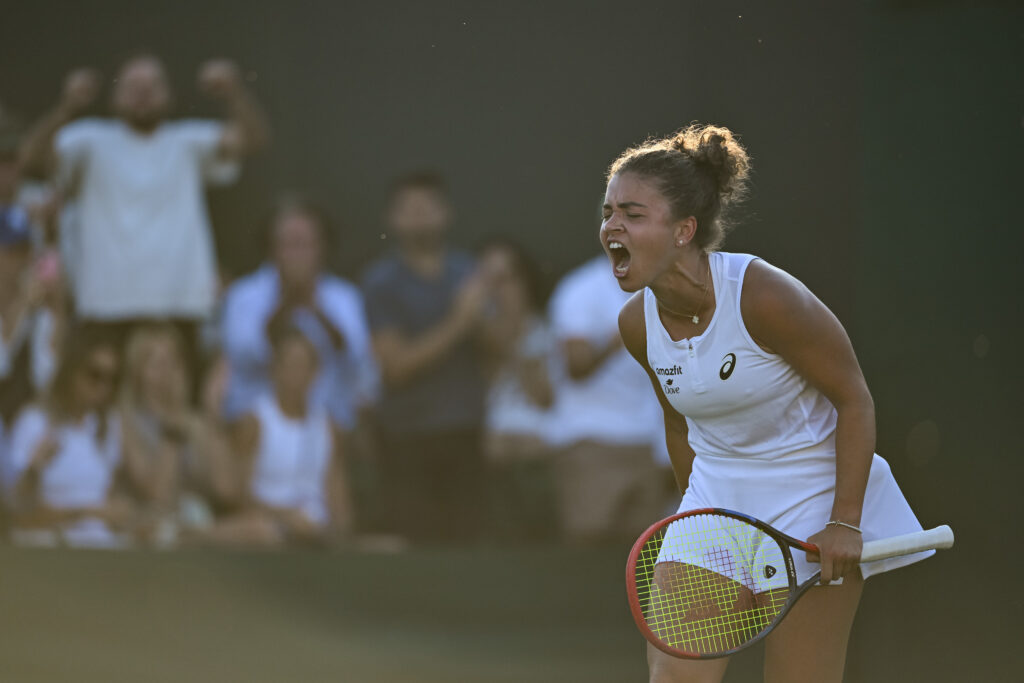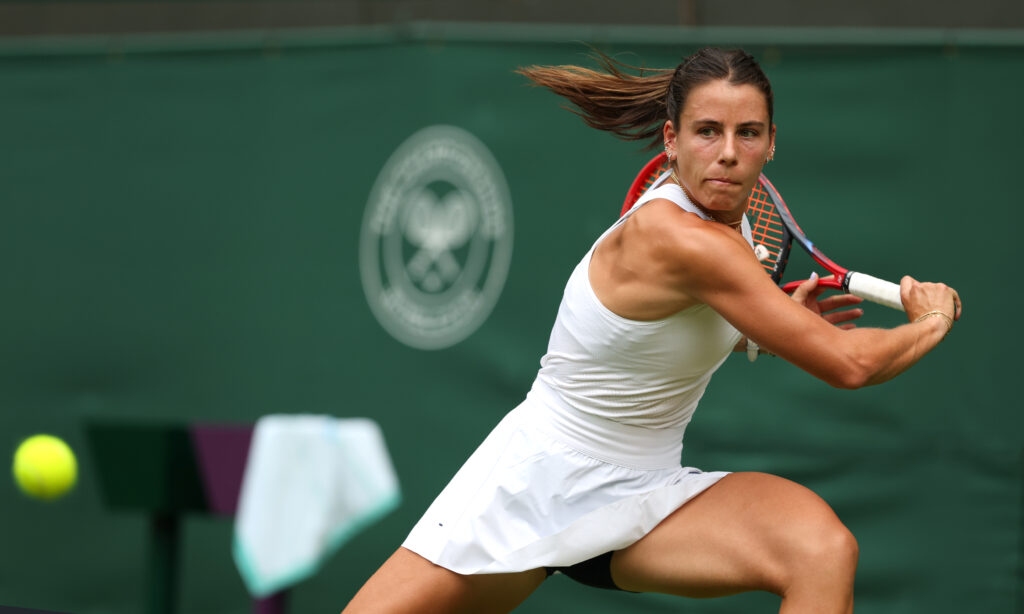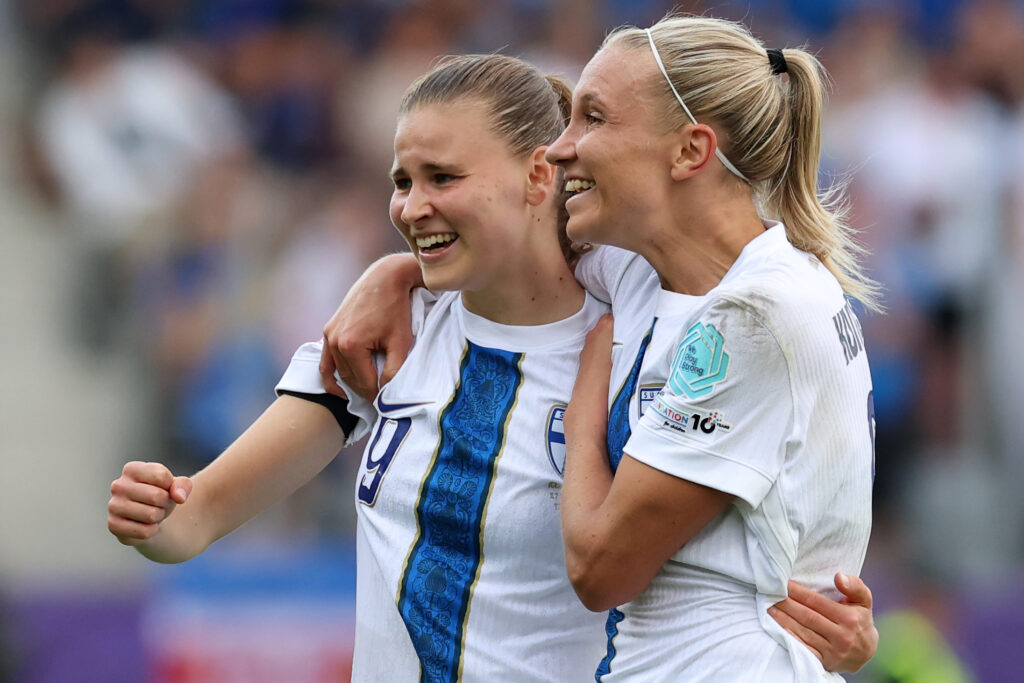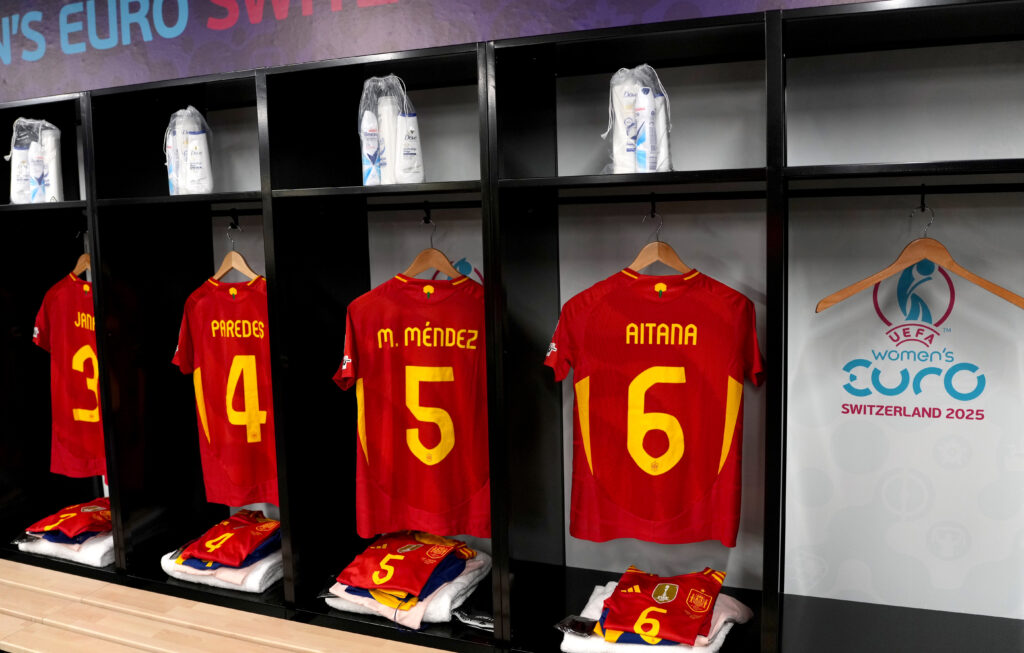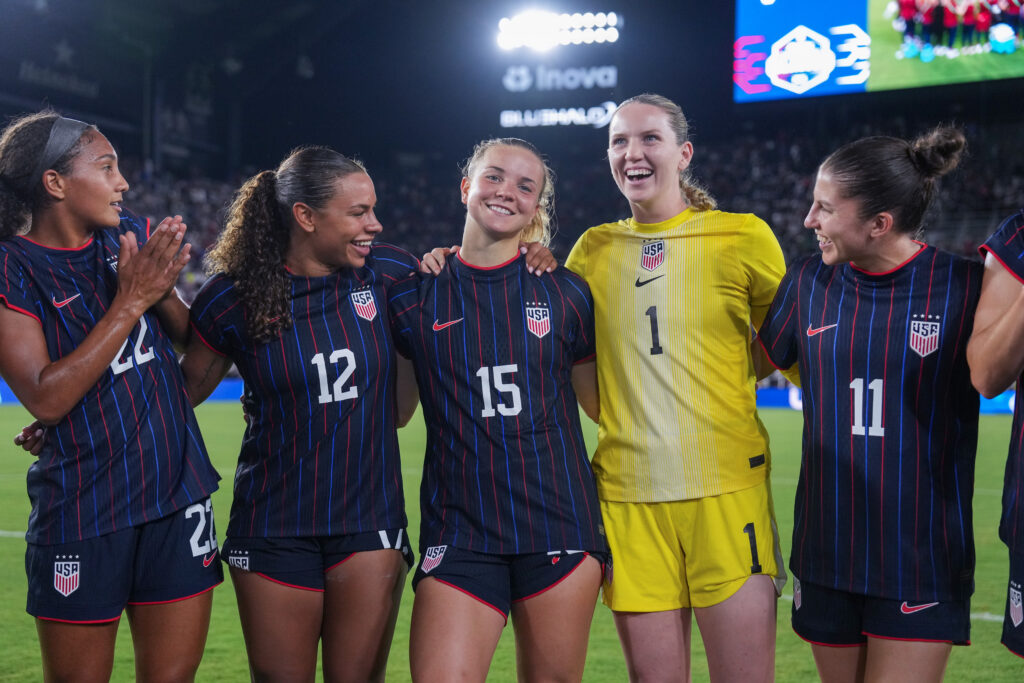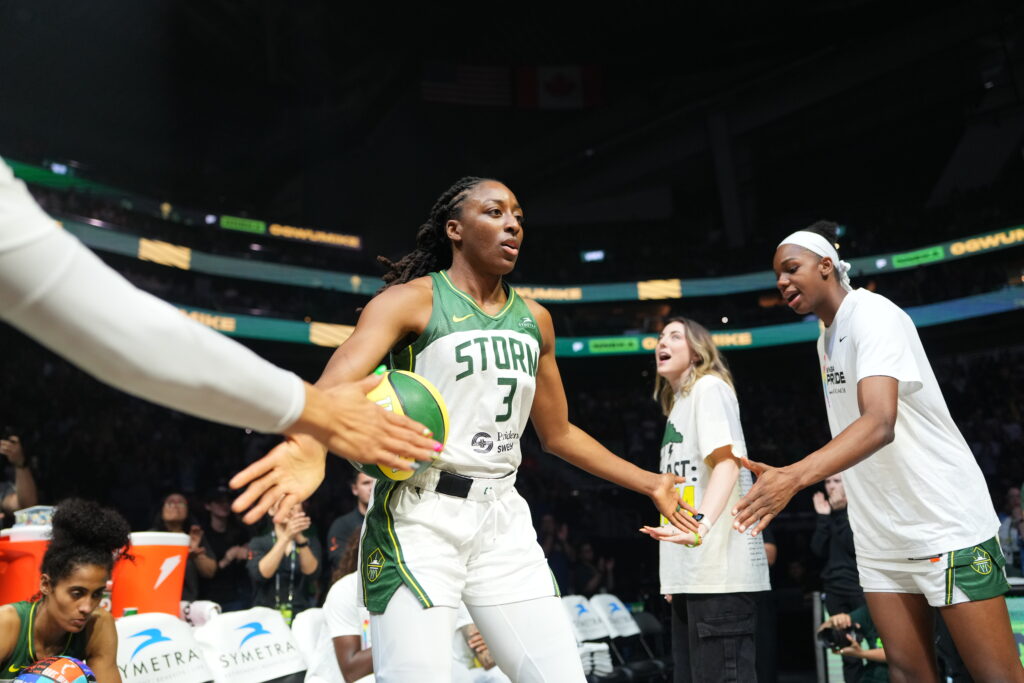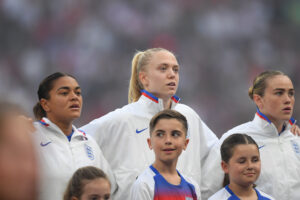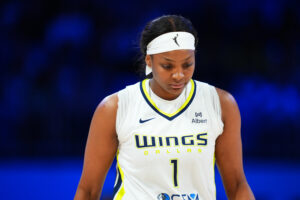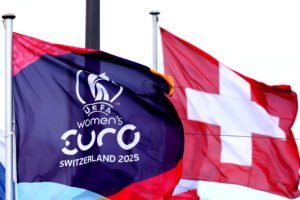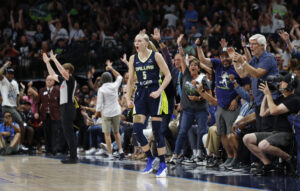Thirty years ago, U.S. women flexed their athletic might at the 1992 Albertville Winter Games, the first post-Cold War Olympics, when they took home all five of the United States’ gold medals. Since then, several transformative athletes emerged to take the recognition and participation of women’s alpine skiing to new heights, inspiring the next generation of rising stars: Picabo Street, Julia Mancuso, Lindsey Vonn, and now, Mikaela Shiffrin.
The 2022 Beijing Winter Games, despite the looming shadow of the COVID-19 pandemic and U.S. diplomatic boycott, will similarly showcase alpine ski racing. While the attention will be on two-time Olympic gold medalist Shiffrin, the performance of Team USA is a beacon for women in the U.S. Ski and Snowboard’s elite racing programs. They’ll be cheering on teammates half a world away, illustrating how this individual discipline feeds off of a multigenerational team approach.
It’s a system that U.S. Ski & Snowboard, snow sports’ governing body in the U.S., has crafted over the past decade to nurture rising talent. And it’s women like 19-year-old Zoe Zimmermann and 20-year-old Allie Resnick, members of the national U.S. Team C and Team D ski teams, respectively, who represent the next era of Team USA in the Olympic and FIS World Cup cycles.
The U.S. pipeline seeks to “sustain success in the sport of alpine ski racing,” according to the federation. That’s why investment in the elite development of the rising generation is a priority for U.S. Ski & Snowboard President and CEO Sophie Goldschmidt, who took over the position in Oct. 2021.
“You need to have a really good system and process in place to identify, protect and encourage the athletes in the right way at the right time,” she says.
The system is fairly diffuse, built upon several different layered pathways that reflect the unique American sports landscape. At the bottom of the pyramid are the local competitions and clubs, which are first reference points for those young skiers whetting their interest in the sport. These programs feed rising talent into the divisional and then regional competitions and, for those who show the most promise, the national level, which includes a mix of ski-specific academies, elite racing clubs and NCAA teams.
From there, the top talent ascends to the U.S. Skiing national teams. The country’s elite racers make up four teams: Team A (which features Shiffrin), Team B, Team C and Team D, the development team. This season, there are 20 female athletes across the four teams, specializing in technical events (slalom, giant slalom) and speed events (downhill, super G).
The federation covers the full professional existence costs for skiers on these four teams, according to Goldschmidt. This means that all aspects of a skier’s in-season and offseason training program are paid for, including coaching, technical and medical support, travel, boarding and lodging. Athletes on Teams A, B, and C also receive a small stipend of $10,000, according to sources, in return for their national team service; Team D members do not.
Racers can move up or down levels depending on where they are physically, mentally and personally. Lindsey Vonn, for example, competed with the national teams for 18 years, from 2002 until her retirement in 2019, although not always with the top team. At one point, demotion from Team A served as a reality check. “She kind of credits that ultimately with where she got to,” Goldschmidt says.

Because racers are individuals, and each athlete is different, there is no one-size-fits-all approach for the elite pipeline. Instead, this fluidity is purpose-built. “You want a really deep system, but you want to keep a little bit of flexibility as well, based on how people prove themselves,” Goldschmidt says.
Adaptability is also born from the fact that racing careers can span a wide range of ages. “The real standout talent can shine through in their very early teens,” Goldschmidt says. “Others might take a lot longer to develop.” Female racers typically come into their own sooner than their male counterparts since their bodies develop earlier. The national teams take into account 17-year-old athletes still in high school, 20-year-olds in college and those well into their mid-20s and early 30s.
“There definitely isn’t one path to the top,” Goldschmidt says.
Nor is there one pathway into an alpine racing career. Zimmermann and Resnick took different routes into ski racing, but their stories illustrate the pipeline experience.
For Zimmermann, racing is embedded in her DNA. Grandfather Egon Zimmermann raced with the Austrian ski team, including at the 1960 Squaw Valley Winter Games, while grandmother Penny Pitou won two Olympic silver medals for Team USA that same year in downhill and giant slalom. Pitou has long inspired her granddaughter in her career.
“She’s one of my biggest supporters,” Zimmerman says.
The New Hampshire native grew up skiing and playing soccer. In sixth grade, she switched schools, into a program that allowed her to train for half the day and pick up with her academics in the second half. Zimmermann continued this dedicated formation during high school at Burke Mountain Academy in Vermont. A specialized school that’s produced generations of winter Olympians, including Shiffrin, Burke serves as an official U.S. Ski Development site partner and enables students to train at the highest levels while finishing school.
“That was the beginning of me deciding to choose skiing as a career,” Zimmermann says. The training was intense and forced her to to rebalance her priorities; soccer, for one, became a conditioning tool, and not a competitive sport.
“I didn’t realize all the things I’d be giving up when I started,” she says. “But when you experience success, you realize this is something you want to do.”
Burke provided her with the opportunities to chase her passion, and Zimmermann raced her way up the competitive ladder. In 2019, the then 17-year-old was named to the U.S. development ski team (Team D), and she has since worked to finesse her craft, ascending to Team C for the 2020-21 and 2021-22 seasons.

Last year, the pandemic created a newer “normal” for the alpine ski circuit. Zimmermann raced predominantly slalom and giant slalom events at the National Championships, FIS and European Cup circuits, as well as the National Jr. Championships (Slovenia, Dec. 2020) and FIS Junior World Ski Championships (Bulgaria, March 2021). Her best result was a first-place finish at the FIS slalom race in Dobbiaco, Italy last March, when she blew past the finish line 1.46 seconds ahead of the competition.
Despite the assumption of glamor, and the idea that skiers gallivant from one picturesque ski resort to another across the continents, life on the road is much more mundane. “Traveling a lot can get pretty exhausting, living out of a bag for months on end and bobbing back and forth from hotel room to hotel room,” Zimmermann says.
It can get lonely, too, especially over the past couple of years as COVID-19 protocols have kept athletes confined to their hotel rooms outside of training and competition. “That made me go crazy sometimes,” Zimmerman says.
The temporary health and safety protocols also prohibited much intermingling on the race circuit. “Not being able to ride up the lift with other people makes it difficult to get to know others who you are racing against consistently,” she says.
It’s a bonus to be on the same team as legends like Shiffrin. Even though Zimmermann doesn’t see her often, the most decorated American alpine skier inspires pursuit of the sport’s top levels. “Being able to watch what’s possible, what can be done, and using them as inspiration for skiing, for me has been really big,” Zimmermann says. “One of the challenges is that people forget that [skiers like Shiffrin] are one in a million. I feel like sometimes people want us to follow in their footsteps, but they’re prodigies, so it’s a little difficult to live up to that level or come close to it.”
Resnick has lofty goals like Zimmerman, but for her, the pathway looked quite different. While her parents enjoyed the sport, there was no elite-level ski competition in the family. Instead, Resnick grew up a self-described weekend warrior, hitting the slopes as much as possible, first at Beaver Creek when the family lived in California and then, after relocation to Denver, at Vail. On Saturdays, she skied with a youth club and friends; Sundays were family ski days with her parents, brother and sister.
Eventually, Resnick began to find her way to racing. She started to compete in National Standard races (NASTAR), one of the country’s largest grassroots ski racing programs. After some initial successes, Resnick joined the Ski & Snowboard Club of Vail (SSCV), where she swapped her leisure skiing for dedicated race training. When Resnick was in fifth grade, the family relocated to Vail so that she and her siblings (sister Emma is on U.S. Ski Team D) could pursue their passion.
Resnick continued to progress, and in 2020 was named to the U.S. Development Team (Team D). This past fall, she began her freshman year at Dartmouth College, which has long partnered with the U.S. ski teams. Thanks to a trimester system, alpine racers like Resnick (and Zimmermann) can train with the Dartmouth ski team in the offseason while attending fall and spring semesters, but withdraw for winter term to compete for Team USA.
As part of the rising generation, Zimmermann and Resnick look to their teammates for inspiration, support and camaraderie. But it’s not always easy to balance the competing pressures of performing as an individual while cheering on the larger team effort.

“I learned how to separate [it],” Resnick says of growing up racing against her sister. “Your success doesn’t take away from my success. My relationship with my sister has really helped me embrace the team aspect of skiing.”
“You want your teammates to do well, but you want yourself to do well,” Zimmermann says. “You’re competing against your teammates, but we’re in this together. If one of us succeeds, then that helps all of us.”
That’s where having teammates like Shiffrin can make a difference. The two-time Olympian explained at a Nov. 2021 press conference how her teammates have helped push her. “Training with all the girls, [it felt] like we were all bringing up the pace,” she said. “We were sharing the fastest times, run to run. It was really exciting going into the first race of the [FIS World Cup] season knowing that the fastest skiers in the world are on my team.
“We’ve had very fast skiers with a lot of pace who had a lot of potential, but there hasn’t been this much consistent depth, and that’s a testament to what they’re doing in the offseason.”
***
The United States has built a strong pipeline of women’s alpine skiers that’s flourished despite the pandemic due to a hidden strength: skiing’s relatability to the general public. To Goldschmidt, this quality breeds an unparalleled public passion that’s one of the sport’s best assets in sustaining the pipeline.
“It crosses over into a lifestyle space,” she says. “It’s something that people do competitively, but enjoy just as much non-competitively. It’s something you do with family and friends spending time together, and then telling the stories afterwards. I think it’s really powerful and impacts people in a very powerful way.”
This connectivity is one of the reasons why the alpine ski teams have weathered the COVID-19 pandemic relatively well. “Our sponsors, commercial partners continue to be very supportive and have stood by us,” Goldschmidt says.
So did their donors: “They actually invested more to make sure that the athletes weren’t hurt when they didn’t have the same income coming from competing,” she says. The federation also gave out stipends that allowed their top athletes to continue living and training at the same level as they were pre-pandemic.
Yet, for all of their Olympic, World Championship and World Cup successes, the U.S. women’s alpine ski teams remain very heterogeneous. The sport must overcome many challenges in order to be more accessible, affordable and inclusive. For starters, skiing can be expensive for families, let alone for those trying to fund a child’s burgeoning career as a competitive racer. Moreover, the geography of the United States means that the populations with the easiest access to snow and downhill skiing are not traditionally the most demographically diverse.
Goldschmidt, at the start of her tenure, sees ample opportunity to effect positive change. The recipe for sustainable success emphasizes talent pulled from all over the country. U.S. Ski & Snowboard works with organizations like the National Brotherhood of Skiers and the Share Winter Foundation to diversify the sport’s talent pool, encouraging athletes to try it and making it more financially and geographically accessible for those groups.
“More talent in the system ultimately will lead to more commercial success, because there will be more eyeballs focused on our sport and more partners will be interested,” Goldschmidt says.
High-profile events like the Olympics draw public attention to the sport, and this year’s Winter Games, despite diplomatic boycotts and closed-loop bubbles, will do just that. “It’s huge,” Goldschmidt says. “There’s that old adage: If you see it, then you believe it. And we’ve got that,” she says of Team USA’s alpine contenders, including Shiffrin, AJ Hurt, Paula Moltzan, and Nina O’Brien.
That’s why, for Goldschmidt, a key piece to building and sustaining a thriving pipeline includes facilitating greater engagement between racers and fans.
“For someone thinking of skiing for the first time,” she says, “there’s nothing more aspirational than that kind of connection, and the Olympics shine an even brighter light on them.”
Lindsay Sarah Krasnoff is a global sports writer and contributor at Just Women’s Sports. Historian and author of “The Making of Les Bleus: Sport in France, 1958-2010,” she lectures and teaches sports diplomacy classes and contributes to various outlets. Follow her on Twitter @Lempika7.
